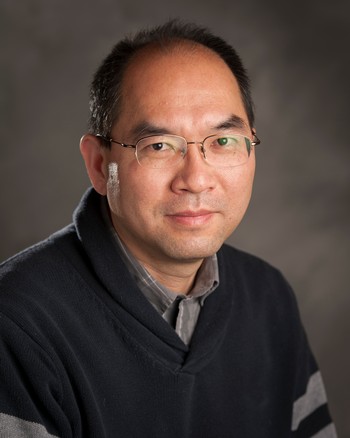MSU-led team receives nearly $2 million EPA grant to explore biosolid treatments, effects of chemical pollutants such as PFAS
The group will investigate the impact of current biosolid treatment methods used by wastewater treatment facilities on a variety of pollutants in soil, water and plants.

EAST LANSING, Mich. — A team of researchers led by Hui Li, a professor in the Michigan State University Department of Plant, Soil and Microbial Sciences, has received nearly $2 million from the U.S. Environmental Protection Agency (EPA), the Great Lakes Water Authority and Colorado-based organizations Brown and Caldwell, Progressive Farms and South Platte Renew.
The group will investigate the impact of current biosolid treatment methods used by wastewater treatment facilities on a variety of pollutants in soil, water and plants. For agricultural purposes, some growers use biosolids as a soil amendment to provide plant nutrients and improve soil health, but there is mounting concern that they inadvertently introduce harmful chemicals such as per- and polyfluoroalkyl substances (PFAS), and pharmaceuticals and personal-care products (PPCPs).
PFAS, in particular, has become a growing public concern in recent years as a threat to human health, resulting in an increased emphasis on research from both funding agencies and scientists. To that end, MSU has created the Center for PFAS Research, which brings together scientists from across the university to quantify and communicate PFAS risks while working to mitigate its impact.
Developing quantitative models for human exposure is the ultimate goal of the new project, followed by communication of the information via MSU Extension and other outreach initiatives.
“Human activities are causing more of these chemicals to reach municipal water resource recovery facilities, which are currently ineffective at removing PFAS,” Li said. “We’re trying to build on our understanding of the issue to inform possible treatment methods in the future, potential risks associated with land application of biosolids in soils, and plant accumulation of these chemicals.”
The research team includes MSU scientists Wei Zhang, an associate professor in the Department of Plant, Soil and Microbial Sciences, and Courtney Carignan, an assistant professor in the Department of Food Science and Human Nutrition. They are joined by James Ippolito from Colorado State University, Qingguo Huang from the University of Georgia, and John Norton Jr. from the Great Lakes Water Authority.
“We are delighted to support and help lead this important project,” said Norton, the director of Energy, Research & Innovation at the Great Lakes Water Authority. “We remain committed to the best water and wastewater treatment we can provide. This important research project will help us understand, and thus minimize, the risks due to treatment of wastewater biosolids.”
Research for this project initially began with seed funding from Project GREEEN (Generating Research and Extension to meet Economic and Environmental Needs), a partnership among MSU, plant agriculture organizations and the State of Michigan.
The objective of the Project GREEEN phase was to evaluate the uptake and accumulation of PFAS in food crops from soils amended with biosolids. Specifically, researchers tested two extraction methods to quantify a suite of PFAS types in lettuce tissues. A review paper summarized research progress, while also identifying knowledge gaps.
“We saw some preliminary results that allowed us to put forth a proposal for EPA funding,” Li said. “We are very thankful for the opportunity this grant provides, and for our partners who will work with us to gain knowledge on the prevalence of these chemicals across the country. This has significant potential to help address a growing food safety challenge.”
With the new funding, the first step is for scientists to surveille current biosolid treatment processes for PFAS and PPCP concentration and leachability. Then, through field and laboratory experiments, Li and his team will look to fill knowledge gaps in the fate, transportation, occurrence and plant uptake of PFAS and PPCPs. This data collection will help in the development of models that quantify exposure risk to humans, which will be shared with communities and agencies responsible for biosolid treatment.
“The EPA defined one of its priorities as evaluating pollutants in biosolids, so our work fits perfectly,” Li said. “We look forward to supporting states, municipalities and utilities in helping inform the development of standards and policies for management of biosolids.”



 Print
Print Email
Email




